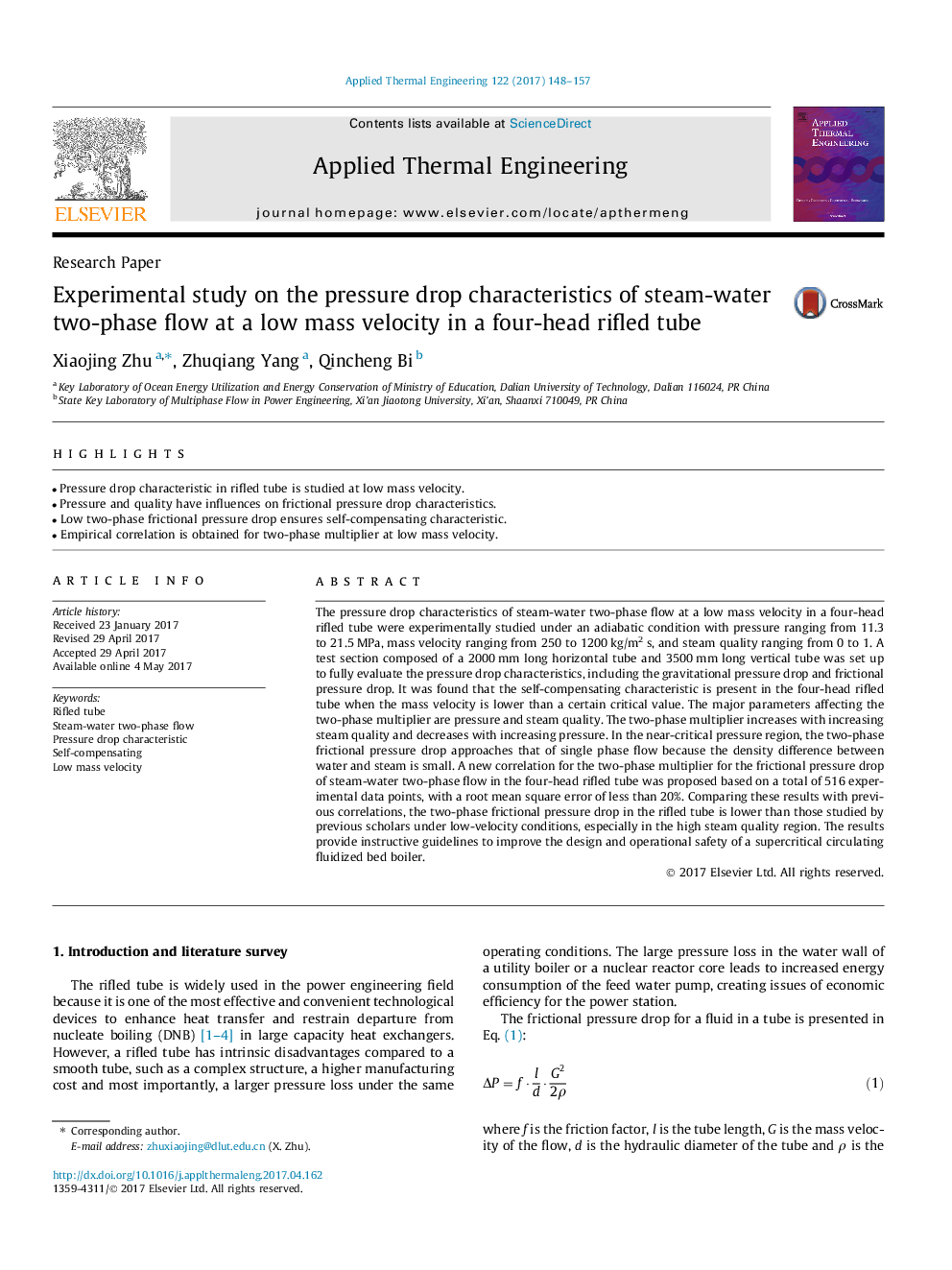| Article ID | Journal | Published Year | Pages | File Type |
|---|---|---|---|---|
| 4990911 | Applied Thermal Engineering | 2017 | 10 Pages |
Abstract
The pressure drop characteristics of steam-water two-phase flow at a low mass velocity in a four-head rifled tube were experimentally studied under an adiabatic condition with pressure ranging from 11.3 to 21.5Â MPa, mass velocity ranging from 250 to 1200Â kg/m2Â s, and steam quality ranging from 0 to 1. A test section composed of a 2000Â mm long horizontal tube and 3500Â mm long vertical tube was set up to fully evaluate the pressure drop characteristics, including the gravitational pressure drop and frictional pressure drop. It was found that the self-compensating characteristic is present in the four-head rifled tube when the mass velocity is lower than a certain critical value. The major parameters affecting the two-phase multiplier are pressure and steam quality. The two-phase multiplier increases with increasing steam quality and decreases with increasing pressure. In the near-critical pressure region, the two-phase frictional pressure drop approaches that of single phase flow because the density difference between water and steam is small. A new correlation for the two-phase multiplier for the frictional pressure drop of steam-water two-phase flow in the four-head rifled tube was proposed based on a total of 516 experimental data points, with a root mean square error of less than 20%. Comparing these results with previous correlations, the two-phase frictional pressure drop in the rifled tube is lower than those studied by previous scholars under low-velocity conditions, especially in the high steam quality region. The results provide instructive guidelines to improve the design and operational safety of a supercritical circulating fluidized bed boiler.
Keywords
Related Topics
Physical Sciences and Engineering
Chemical Engineering
Fluid Flow and Transfer Processes
Authors
Xiaojing Zhu, Zhuqiang Yang, Qincheng Bi,
